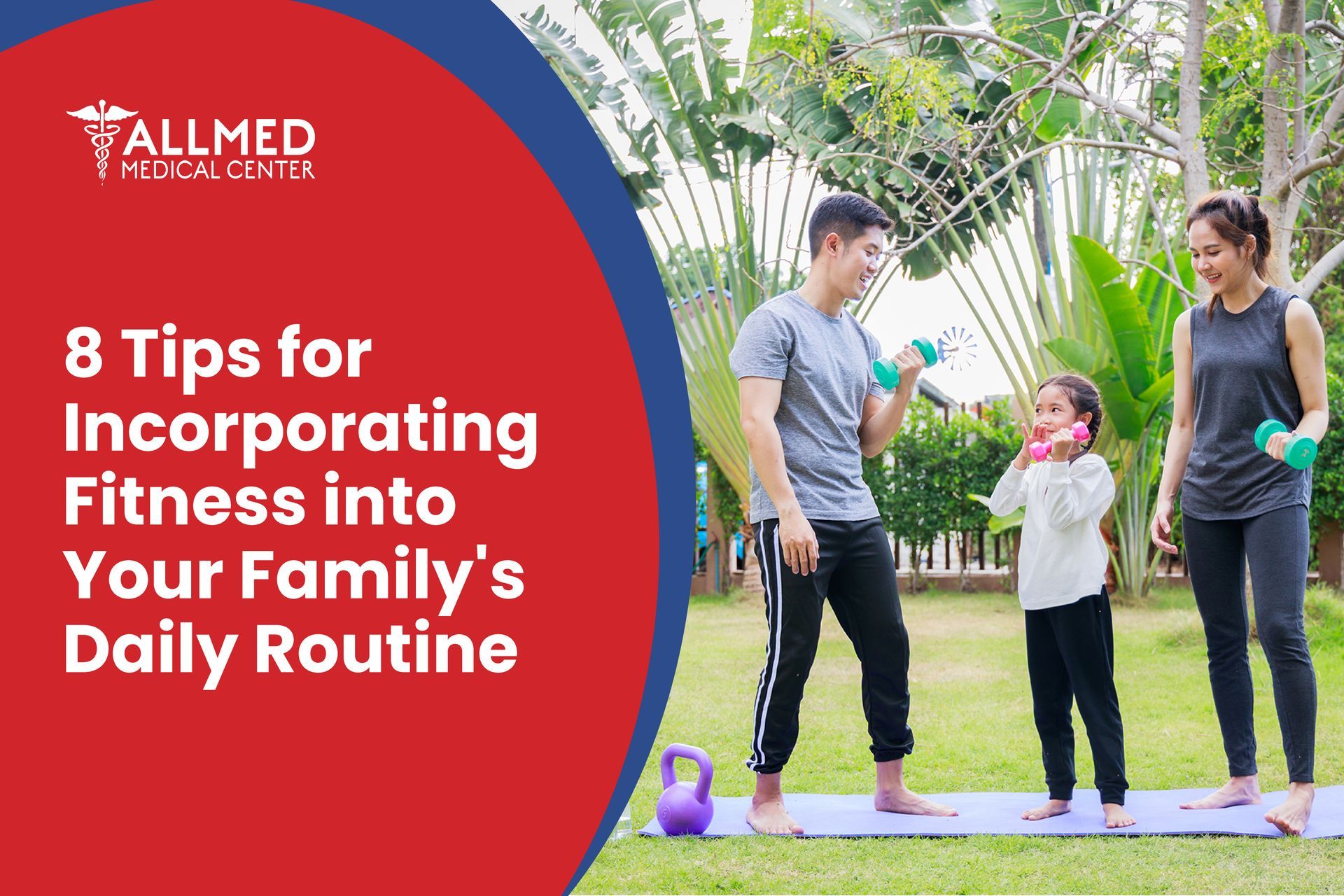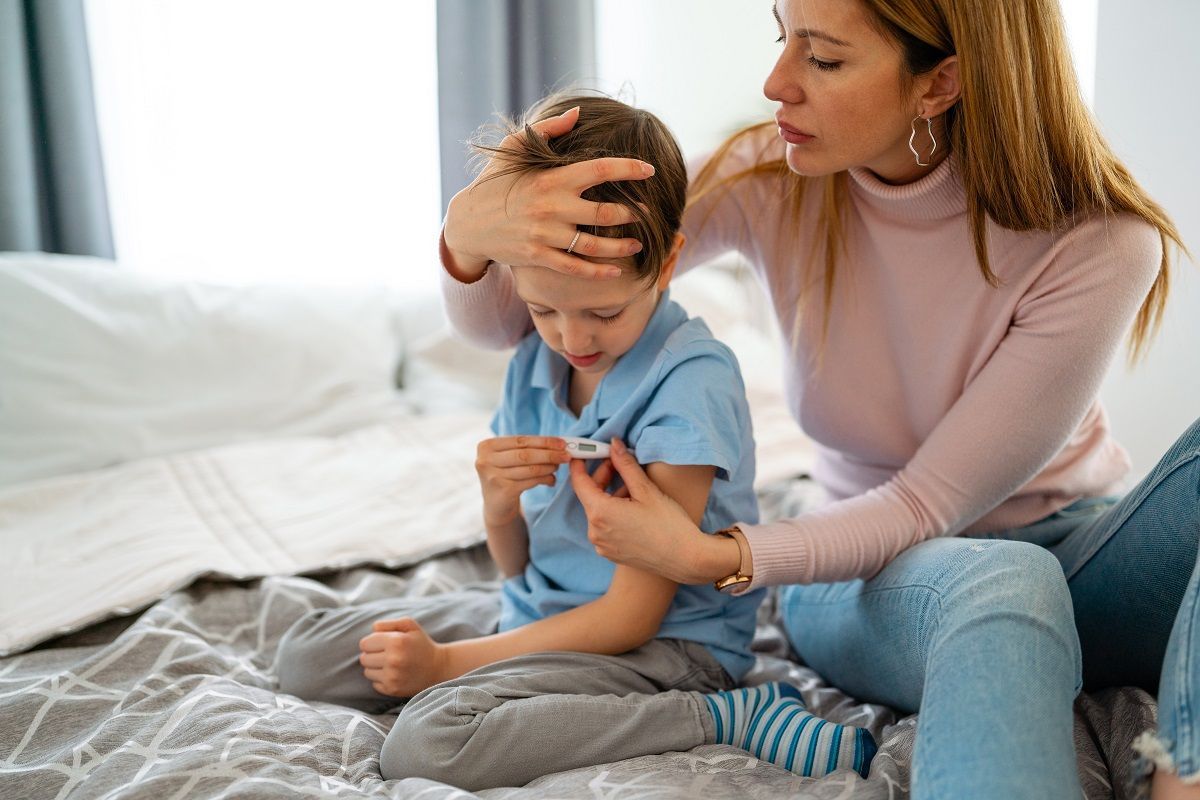
We Proudly Accept Medi-Cal and Medicare
Write your caption hereButton
Now Accepting Walk-ins!
Write your caption here

We Proudly Accept Medi-Cal and Medicare
Write your caption hereButton
Now Accepting Walk-ins!
Write your caption here

Getting your family to exercise has several beneficial implications. It can help prevent health problems like heart disease and high blood pressure, improve your mood and reduce stress, give you more energy, and even help you sleep better. These are just among the many reasons you should have a fitness connection family plan.
Also, the American Heart Association stresses the importance of daily activity for your children to be healthy. Children aged six and older benefit from having a routine exercise for at least
an hour per day. This will help them keep a healthy weight and improve their cardiovascular, mental, and physical health.
8 Tips for Incorporating Fitness into Your Family's Daily Routine
January is
Family Fit Lifestyle Month but being physically active year around benefits your family's health. We hope to motivate you to change your family's lifestyle and get active together. Getting fit requires adhering to exercise ideas and fitness rules, eating sensibly, and exercising regularly. Here are eight ideas for building an exercise routine for your family.
1. Establish Goals
Set objectives that the whole family can work toward. Even if you don't meet every goal in the first few weeks, physical exercise will eventually become ingrained in your daily life.
Make sure your goals are realistic, attainable, and flexible. Make a specific plan, such as walking for 30 minutes every day, three times a week, rather than just declaring you'll start exercising more.
2. Promote Playtime
Reserve thirty minutes three times per week to engage in entertaining activities with your children. Make it part of your routine after school or after dinner. Your little children may enjoy hopscotch or hide-and-seek, while the older children can participate in soccer or basketball.
Every weekend, schedule at least one family activity. It might be as simple as taking your young children to the playground or as tricky as a full-day walk with a teen.
Planning time for physical activity is crucial to getting your children to move. First and foremost, you can find this moment by turning off the television. Then, provide a choice of competitive and noncompetitive family activities. When children discover various ways to move their bodies, they are more likely to find workouts they enjoy and
wish to continue for the long term.
The best objectives are those that you can see yourself achieving, and that is flexible enough to allow for mistakes. A more actionable and less vague suggestion would be "take a 30-minute jog or walk."
3. Schedule Fun Family Get-Togethers
Suppose you want to know how to build a routine exercise for the family. In that case, you can
organize energetic games such as tag or relay races for your child's birthday celebration. Older children might like to have a dance party.
Any time many children get together, they can play a team sport. Just go to a nearby field for soccer or a court for basketball. Other active party ideas include a pool party, inline skating, ice skating, or climbing at an indoor rock gym.
Take a walk around the neighborhood during family gatherings or a short hike in a nearby park instead of watching TV. Alternatively, gather everyone outside for a game of catch or basketball.
4. Dance and Sing While Cleaning
Put aside time for the family to pitch in with the duties around the house.
When you are cleaning, put on some music, and take turns picking out your favorite tunes while you can dance and sing along.
Younger children like lending a hand and being able to grab toys or sweep floors while singing and dancing with the broom. Meanwhile, older children can dust, vacuum, and help make beds.
5. Walk or Bike Whenever Possible
Please use your muscle strength by walking, biking, rollerblading, or scooting
whenever the situation permits. Instead of immediately turning on a screen after dinner, take your children for a stroll with the family.
Make it competitive by seeing who reaches their target first or gets the most daily steps. Use an activity tracker to keep tabs on everyone's mileage or actions taken throughout the day. While cheering each other on, you might use a family exercise diary or some colored stickers as a visual reminder of progress.
6. While Working, Pause for Activities
While your children are working on their homework, you should encourage them to
take breaks to either stretch or walk around the house. Simply standing rather than sitting will help keep the blood moving and enhance their energy levels.
Schedule a consistent break time with your children, and you can practice yoga together as a family.
7. Reduce the Burden of Yard Work
You can get some seasonal yard work done and
enjoyably together. A garden can be planted and tended to with the assistance of even the youngest children. The more mature children can rake the leaves into a mound, and then they can jump in it.
Building a snow fort or making a snow family can turn the chore of shoveling snow into a pleasurable activity your family would enjoy.
8. Take Advantage of the Beautiful Outdoors
Make it a daily routine to participate in an
activity with your children outside. Explore the nearby area on foot or by bike along one of the area's nature trails.
Engaging in physical activities while in the great outdoors have these benefits:
- Being outdoors lightens your mood. - Exercising outdoors is good for physical and mental health since nature and natural light boost mood. It also alleviates stress and despair. Physical activity frequently soothes and energizes people.
- Vitamin D levels rise. - Skin produces vitamin D when exposed to sunlight. Vitamin D is frequently referred to as the "sunshine vitamin." It can prevent osteoporosis, cancer, depression, heart attacks, and strokes.
Meanwhile, too much sun can
damage your skin. Warm weather
requires 10-15 minutes of sun several days a week. Long-term outdoor
activities require sunscreen.
- Self-esteem increases. - When you work out outside, you can use all of your senses in a way that you can't when you work out inside. Also, being in nature has a good effect on the brain and makes you feel better about yourself.
Ask Your Doctor for More Tips
Look no further than
AllMed Medical Center when you look for "doctors near me" or "clinics in Sacramento" if you need more advice from medical professionals on developing an exercise routine for your family.
Please call our hotline today to set up a meeting at 1-8333-255-6332. You can also use
this link to pick the location you want to go to.
AllMed Medical CentersServing
Greater Sacramento
Allmed Medical Center | All Rights Reserved.










